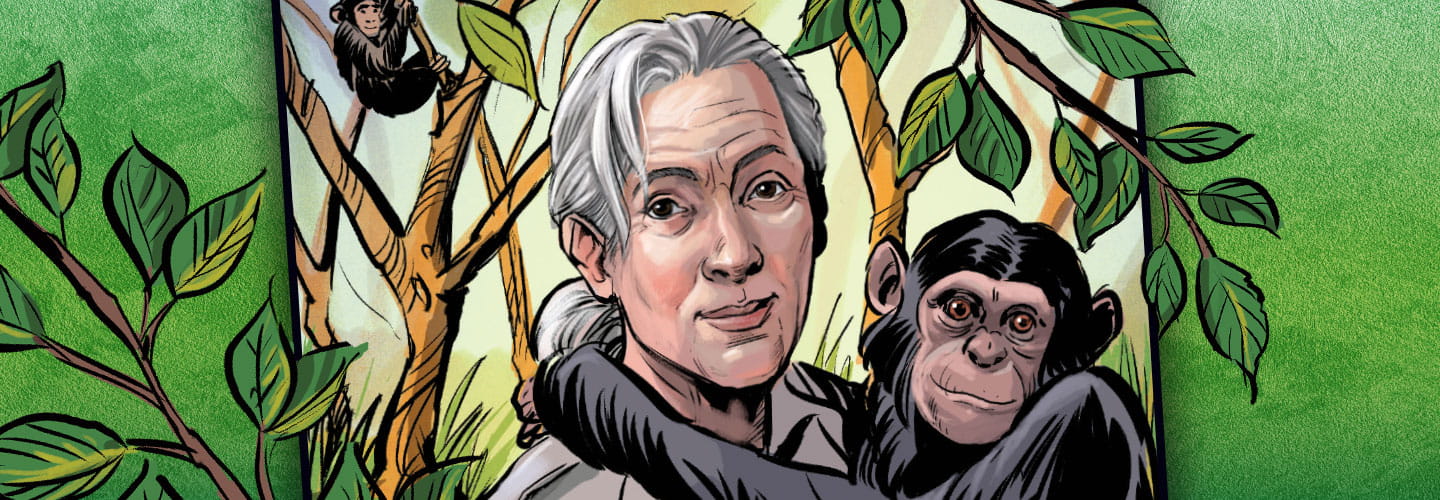Jane Goodall couldn’t believe her eyes. It was November 1960. She was in Tanzania, a country in Africa. Goodall had arrived in what is now Gombe National Park four months earlier. She was there to study wild chimpanzees. No one had ever done that before.
Goodall watched as a chimp she had named David Greybeard stripped the leaves from a stalk of grass and stuck it into a termite mound. The chimp then pulled the stalk from the hole and ate the termites covering it.
“At that time, science believed that humans—and only humans—used and made tools,” Goodall explains.
Goodall’s discovery changed the way we think about chimps. For more than 60 years, Goodall has been working to make the planet a better place for all living things.

